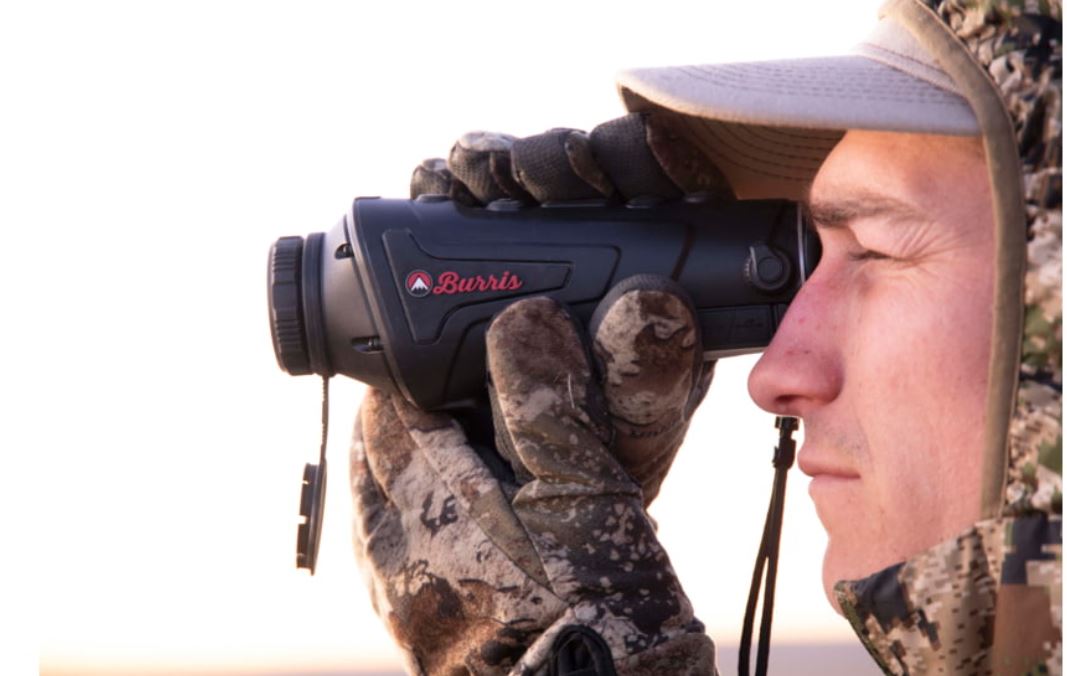Best thermal monoculars for the money
A thermal monocular is useful when it comes to discovering targets hidden and camouflaged in between shrubs and trees. This is because the devices detect heat emitted by an object rather than the light surrounding it.
Choosing the ideal monocular might be challenging due to the abundance of alternatives on the market. Several of which might not provide excellent value that is comparable to the cost you are paying.
However, you are in the right place if you need a thermal monocular but can’t make a quick decision on what to buy. This article will review some of the best thermal monoculars available on the market, along with the benefit summary of each.
Best Thermal Monoculars for The Money-Top Picks
| Product | Image | How To Buy |
| Pulsar Helion 2 XP50 2.5-20 Thermal Monocular | 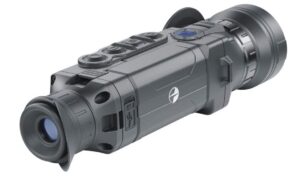 |
|
| Leica Calonox View 2.5 x 42mm Thermal Imaging Monoculars | 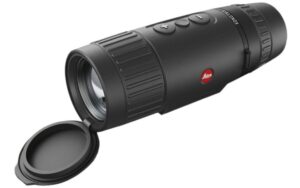 |
|
| Burris BTH Thermal Hand-held Monocular | 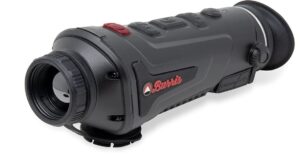 |
|
| ATN OTS-XLT 2.5-10x Thermal Viewer | 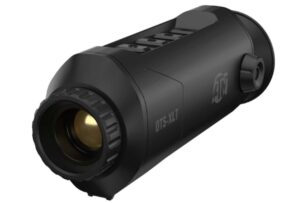 |
|
| AGM Global Vision Taipan TM10-256 Thermal Imaging Monocular | 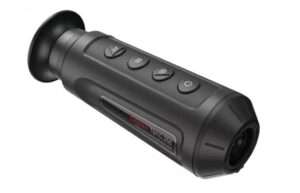 |
|
| FLIR Systems Scout II 320 Thermal Night Vision Monocular |
|
|
The detailed reviews….
1. Pulsar Helion 2 XP50 2.5-20 Thermal Monocular

The pulsar helion may cost a little more, but it offers outstanding value that is justified by its pricing. The monocular has a detection range of 2000 yards thanks to a very capable sensor with 640 x 480 pixels. The finished image is then shown on a high-definition screen with a resolution of 1024 × 768 pixels and a refresh rate of 50Hz.
The rechargeable battery, which has a 10-hour battery life, adds value to your purchase as well. Along with the 8 color palettes that allow you several ways to view the scene and let you tell your target objects apart from their backgrounds, you also get a recording feature with an internal 16GB memory.
Features
- Magnification: 2.5 x
- Refresh Rate: 50 Hz
- Range of Detection: 2000 yds
- sensor Resolution: 640×480 pixels
- Objective Lens Diameter: 50 mm
- Field of View, Angle: 12.4 degrees
- Eye Relief: 15 mm
- -25 – 50 Celsius Operating Temperature
- Li-ion battery
- up to 10 hours of battery life.
- Dimensions 9.2 x 2.2 x 2.5 in
- Water Resistance Level: IPX-7
- Weights 17.64 oz
2. Leica Calonox View 2.5 x 42mm Thermal Imaging Monoculars

This need to be at the top of your selection if you require anything with an impressive range. The detection range of the Leica Calonox monoculars is 3000 meters, which is greater than that of the majority of other monoculars on the market. Not only that, but this monocular also produces superb images with its 640 x 512-pixel sensor and 1280 x 960-pixel high-definition display with a 50 Hz refresh rate.
The monocular is portable and made of durable material. You rarely have downtime when using it because it has an inbuilt battery that will last more than 6 hours. Additionally, a power bank may be used to easily recharge the battery thanks to the USB C port’s charging capabilities.
Features
- Magnification: 2.5 x
- 640×512 px VOx Sensor
- HD display 1280 x 960 px
- Refresh Rate: 50 Hz
- Range of Detection: 3000 m
- Objective Lens Diameter: 42 mm
- Field of View, Angle: 8.4 – 10.5 degrees
- IP67 Water Resistance rating
- photo/video function
- Lithium-Ion battery
- 6+ Hours of battery life
- dimensions: 170 x 60 x 64.3 mm
- Weight: 17.6 oz
3. Burris BTH Thermal Hand-held Monocular

Consider this Burris monocular if you require adaptability. It may be installed on a Picatinny rail, has 5 different color palettes, adjustable brightness, adjustable contrast, as well as a rangefinder for measuring distances. These monoculars also include a highly sensitive 400 x 300-pixel sensor with a range of more than 750 yards.
The Burris has an integrated lithium-ion battery that offers continuous operation for more than 5 hours. Just enough for you to be able to search for all of your targets. Additionally, the device supports wi-fi and enables you to utilize an app to capture all of your favorite photos and videos as you proceed with your hunt. Overall, these monoculars offer great capabilities and should be on your list.
Features
- Magnification: 2.3 – 9.2 x
- Zoom Range: 1x – 4x
- Eye Relief: 10 mm
- Refresh Rate: 50 Hz
- Additional Manual Focus
- sensor resolution: 400×300
- 35 mm Objective Lens Diameter
- 5 different reticles
- IP66 waterproof rating
- Lithium-ion battery
- Battery Life: 5 Hours
- Dimensions: 7.5 x 2.5 x 2.7 in
- Weight: 17.1 oz
4. ATN OTS-XLT 2.5-10x Thermal Viewer

This is the best option when it comes to budget alternatives. The ATN OTS Lt is really popular because it strikes a very good balance between performance and price. The monocular uses a sensor with a resolution of 160 x 120 pixels, providing an impressive 850 meters of range. A mini display with a resolution of 720 x 576 pixels subsequently shows the final image. the monocular also includes a built-in rangefinder which can measure up to 263 yards.
This tool is portable and lightweight, weighing only 370 grams. It can be utilized for a wide range of tasks, including law enforcement, hiking, vacation, and search and rescue. Additionally, you get an exceptional 10+ hours of battery life because of its low power usage, as well as 8 Gb of internal memory to record all of your favorite hunts.
Features
- Magnification: 2.5 – 10 x
- Sensor Resolution: 160×120 pixels
- Display resolution 720 x 540 pixels
- Field of view: 6.5×4.9
- detection range: 850 meters.
- Objective Lens Diameter:25 mm
- Refresh Rate: 50 Hz
- Built-in range finder with 263 yards range
- Compact and ergonomic
- 8Gb internal storage
- IP67 Water Resistance rating
- Battery Type: Lithium Ion
- Battery Life: 10 hours
- Dimensions: 85 x 2.63 x 2.08 in
- Weight: 370 g
5. AGM Global Vision Taipan TM10-256 Thermal Imaging Monocular

This alternative is transportable, lightweight, and compact. Despite having a rather small range of only 460 yards, the monocular provides you with reasonable quality employing a sensor measuring 256 x 192. It is also quite sensitive and produces excellent images even in complete darkness. The images are then shown on a 720 x 540 LCOS display of excellent quality.
This monocular is also available at an affordable price, meaning that, you can save on the extra premium if you do not need the long detection range. you also get a decent built-in lithium-ion battery lasting up to 6 hours, Wi-fi capability, and an internal storage space of 8Gb. Where you can store all your favorite recordings.
Features
- Magnification: 1 – 8 x
- Resolution: 256×192 pixels
- 720×540 LCOS display
- Refresh Rate: 25 Hz
- Objective Lens Diameter: 10 mm
- ‘Auto Power Off’ and ‘Sleep’ modes
- Wi-Fi hotspot
- Lithium Ion Battery
- 8 hours battery life
- Focus Range: 458 m
- IP67 Water Resistance Level
- Dimensions: 6.23 x 2.4x 2.2 in
- Weighs 260g
6. FLIR Systems Scout II 320 Thermal Night Vision Monocular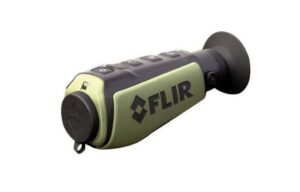
This is a sleek and capable alternative that you can use for all your outdoor activities. The FLIR Scout II can detect targets as far as 600 yards out, both day and night. It uses a sensor measuring 320 x 240 pixels to deliver images on a display measuring 640 x 480 pixels. However, the scope falls short due to its slow refresh rate (9Hz) which may present a challenge when tracking moving targets
The monocular stands out for a number of characteristics, including its rugged design, broad field of view, and use of premium seals to make it weather resistant. The monocular is also easy to use, features ergonomic proportions, is lightweight, and gives you 3 different palettes with excellent contrast for a clear distinction of your targets. Lastly, the monocular has a decent battery that can operate continuously for more than 5 hours.
Features
- Magnification: 2 x
- Resolution: 320 – 240 pixels
- Objective Lens Diameter: 19 mm
- Field of View: 17 degrees
- Internal Li-Ion battery
- Easy-to-use menu
- 3 Detection palettes
- Weather-tight.
- ergonomic design
- 5 Hours battery life
- Dimensions: 6.7 x 2.31 x 2.41 in
- Refresh Rate: 9 Hz
- Weight: 12 oz
Best Thermal Monoculars for The Money- Buying Guide
Resolution
There are two types of resolutions on thermal monoculars, one is the resolution of the thermal sensor. The other is that of the display. The thermal sensor also known as a microbolometer is responsible for detecting the heat and transforming it into an electrical signal that is displayed to the user.
The microbolometers come in different pixel densities, such as 160 x 120, 384 x 288, and 640 x 480. More heat sensitivity and improved image quality are both associated with higher densities.
Conversely, the resolution of the display matters when it comes to displaying quality images. just like the thermal sensor, a higher pixel density means a better quality of the displayed image. Therefore, when purchasing a thermal monocular, it is a wise choice to take into account the pixels of both the sensor and the display.
Magnification
Optic magnification can aid in spotting farther items much closer, while it is not entirely necessary. High maximum magnification, defined as anything more than 5x, has the drawback of decreasing the quality of the images. And the image ends up looking pixelated.
Refresh rate
This is the rate in Hz at which the image corresponding to the target item is regenerated per second. Usually, the best monoculars have a refresh rate of at least 30Hz, but the higher the refresh rate, the sharper the image will appear and the less lag there will be when tracking targets.
Field of View
On a monocular, you frequently encounter figures like 8.3×6.2. These numbers, which are measured in degrees on the vertical and horizontal angles, represent the angular path that the thermal monocular can perceive. With a broader field of view, the monocular can scan a larger area at once, which is very helpful while scouting moving targets.
Range
The detection range denotes the furthest distance at which a target can be detected by a monocular. Simple models are able to cover limited distances (less than 600 yards). But more sophisticated models are capable of detecting distances over 3000 yards. This is a result of the stronger and more sensitive sensor they use.
Color modes
Different thermal monocular display the thermogram using different colors. some give you the option to choose between different pairs. The types of color modes is a characteristic one should consider especially if suffering from color blindness and cannot distinguish certain colors
Battery life
Long periods of time in the field are typically spent using the thermal monocular. This indicates that in order for the activity to be effective, you’ll need a strong battery that will provide you with enough juice to endure for a long time, ideally longer than 4 hours. you can also consider devices that let you easily recharge or swap the batteries.
Weight
A bulky monocular will definitely be a hindrance to carrying and would easily be misplaced out in the woods. Although it isn’t much of a problem, you should nonetheless take weight into account when choosing a monocular.
Best Thermal Monoculars for The Money-FAQs
Can a thermal monocular be used in daylight?
Yes, you may use the thermal monocular outside during the day. This is due to the fact that it does not rely on light to display images, therefore it will not be impacted by the excessive light present during the day.
Is thermal better than night vision?
Both thermal and night vision can be used interchangeably because they are both considered night vision devices. The thermal devices, however, have a slight edge because they function well both during the day and at night. The thermal will also function effectively in challenging circumstances like fog, smoke, and even foliage.
CONCLUSION
This article is mainly concerned with the best thermal monoculars for the money. We can confidently assure that the monoculars we have included in this article will give the best performance in various applications such as hunting, surveillance and search and rescue and tactical operations.
The choice you make from the alternatives we have provides will, however, be totally based on your budget because these gadgets are available at various price points. If you are still not convinced by our options, the buying guide we have provided will be a huge assistance to you as you search the market for other products.
See Also: Best thermal imager for hunting
